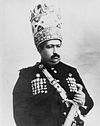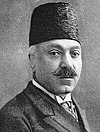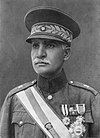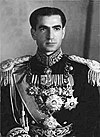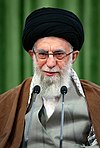Commander-in-Chief_of_the_Iranian_Armed_Forces
Commander-in-Chief of the Iranian Armed Forces
Commander-in-Chief of the Iranian Armed Forces
The position of Commander-in-Chief (Farmandehe Koll-e Qova (Persian: فرمانده کل قوا), formerly known as Bozorg Arteshtārān (Persian: بزرگارتشتاران) is the ultimate authority of all the Armed Forces of Iran, and the highest possible military position within the Islamic Republic of Iran. The position was established during the Persian Constitutional Revolution. According to the Constitution of Iran, the position is vested in the Supreme Leader of Iran and is held since 1981.
After the 1979 Revolution of Iran and 15 days after the inauguration of the first president Abolhassan Banisadr in February 1980, Ruhollah Khomeini delegated him as the Commander-in-Chief.[1] According to Akbar Hashemi Rafsanjani, this was due to the illness of Ayatollah Khomeini and his concerns about the future of the revolution (in his absence).[2] In the decree from Khomeini to Banisadr it is mentioned:
"At this critical stage where the need to concentrate forces is greater than any stage, you are appointed as my representative to the position of the Commander-in-Chief of the Armed Forces in the manner determined by the Constitution of the Islamic Republic of Iran."[1]
Following the impeachment of Banisadr in June 1981, the title of Commander-in-Chief was not transferred to the next president Mohammad-Ali Rajai, and is kept to this day by the Supreme Leader of the Islamic Republic of Iran.

